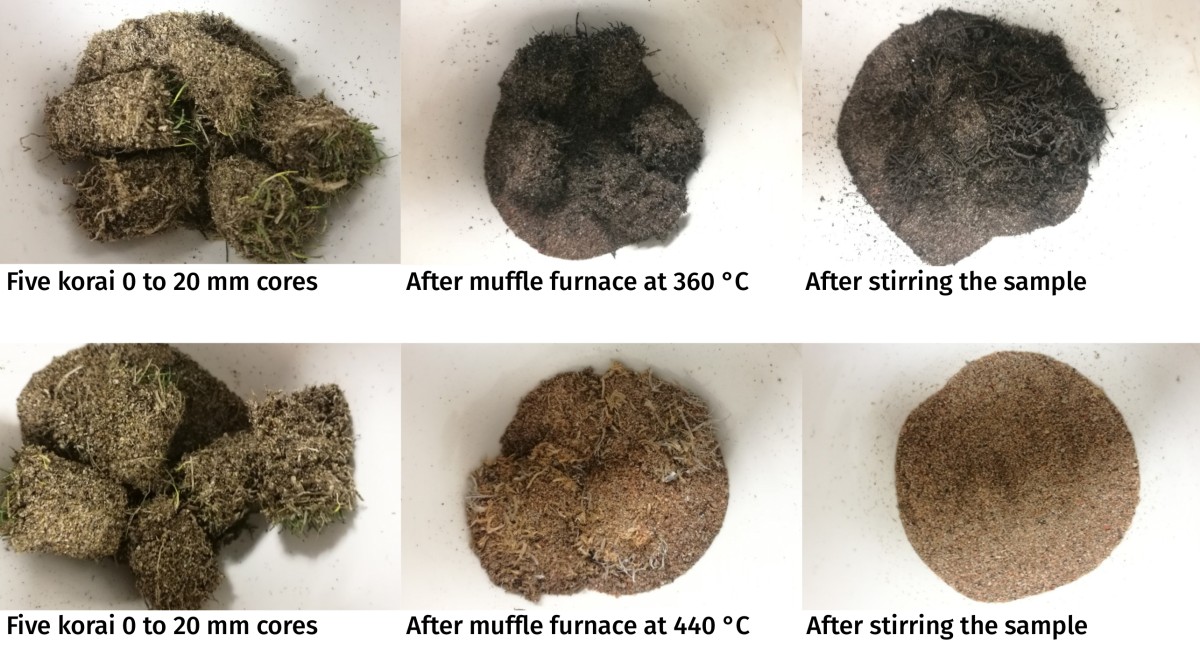I’ve been thinking about measuring organic matter and about the quantity of sand required as topdressing for any turfgrass surface.
For samples taken near the turfgrass surface, I would like to measure the mass loss on ignition, and call that the total organic matter. I don’t want to screen the sample to remove any of the undecayed material.
Of course, one must ignite the sample at a specified temperature. Last year, I had some samples sent to Brookside Laboratories, asked for them to be held until my arrival, and then I checked the samples before they went into the muffle furnace, and again after they came out.
 Five soil plugs at a 0 to 20 mm depth below the surface from a korai (Zoysia matrella) golf course putting green were burned in a muffle furnace at 360 and 440 °C. These photos show the charred residue remaining after a 360 °C burn, and the complete ashing after a 440 °C burn.
Five soil plugs at a 0 to 20 mm depth below the surface from a korai (Zoysia matrella) golf course putting green were burned in a muffle furnace at 360 and 440 °C. These photos show the charred residue remaining after a 360 °C burn, and the complete ashing after a 440 °C burn.
I like to run these samples at 440 °C in the muffle furnace, because that produces a complete ashing of the organic material. In the samples above, the organic matter content was about 15%, or 150 g of mass lost after the burn in the muffle furnace from 1 kg of material.
You may notice that the verdure—the aboveground plant material that remains after mowing—was left on the samples in the photos above. I prefer leaving the verdure on putting green samples. I’ll explain why in a forthcoming post.